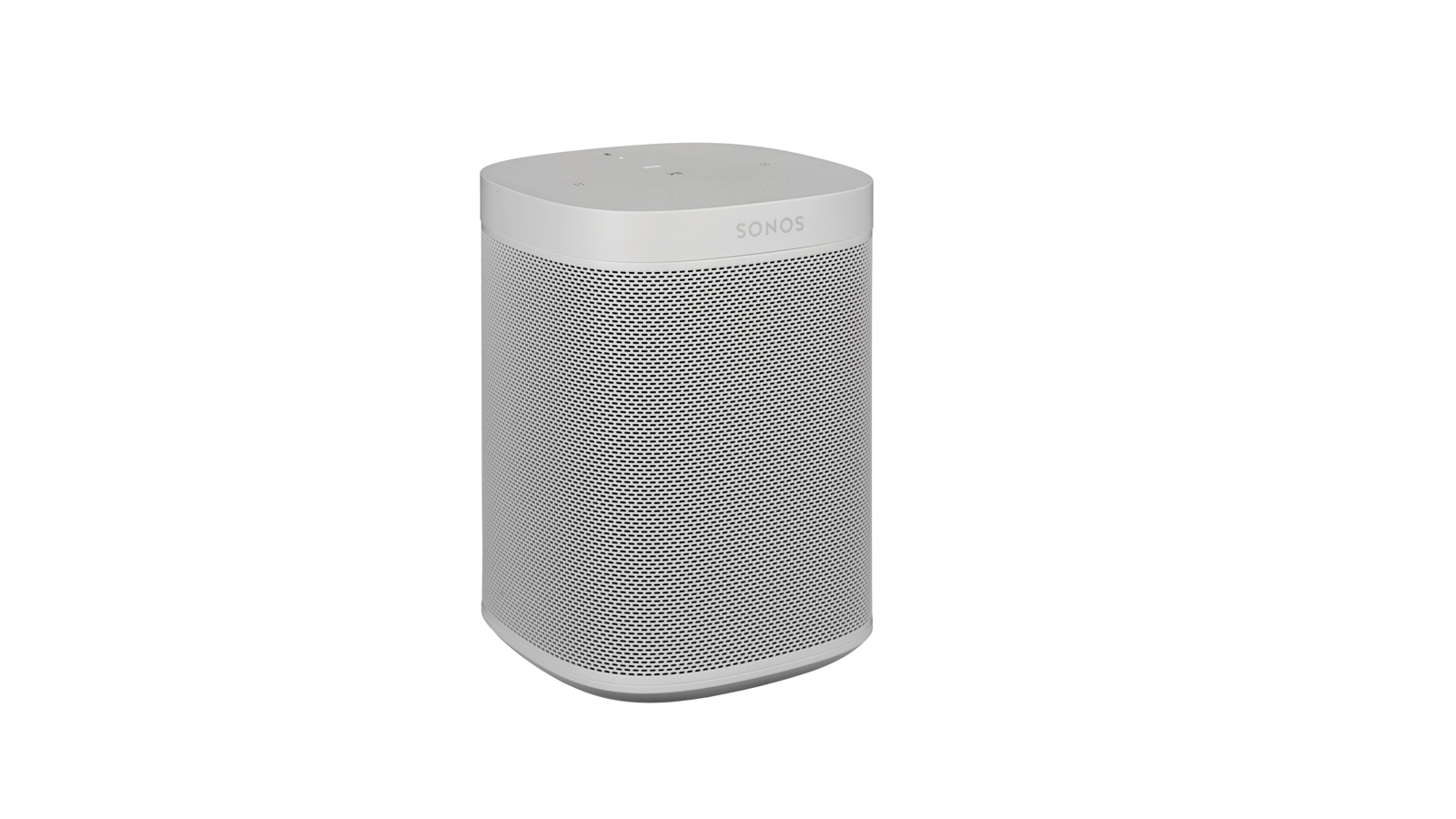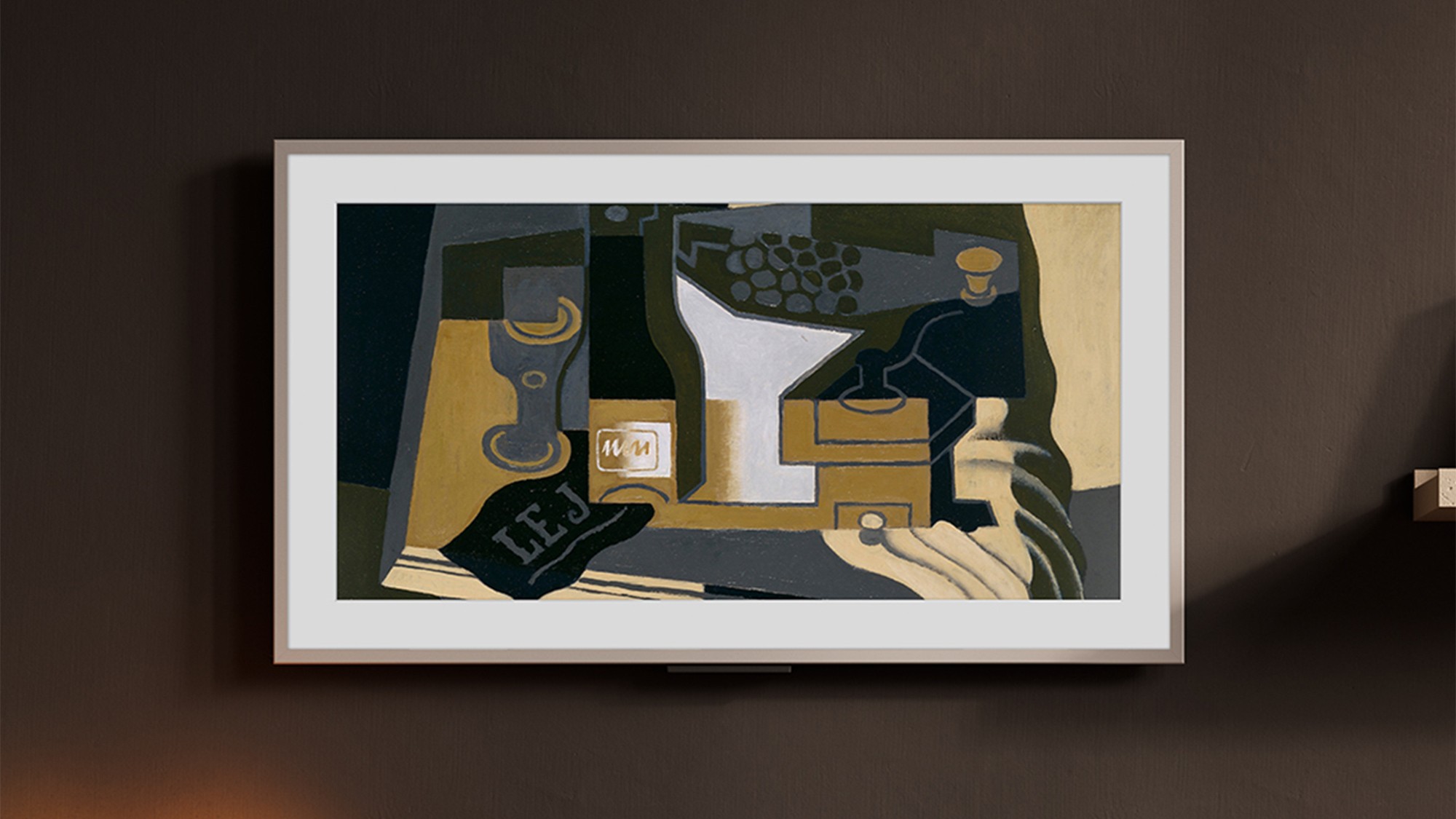What Hi-Fi? Verdict
Despite having been succeeded by the Era 100, the Sonos One is still an ideal, great-value entry point into the excellent Sonos ecosystem
Pros
- +
Stylish, unobtrusive design
- +
Solid, sophisticated sound
- +
Alexa and Google Assistant
- +
Vast streaming features
Cons
- -
Now succeeded by Sonos Era 100
Why you can trust What Hi-Fi?
The Sonos One arrived in 2017 as the first-ever Sonos smart speaker, joining a mass of similarly clever wireless speakers from Apple, Amazon and Google, who were getting in on the streaming, voice-controlled market with their HomePod, Echo and Home offerings respectively.
These were all speakers made by companies that are smart, but not first and foremost experts in audio. That’s why, for hi-fi fans, the more recent trend for audio companies licensing smart technology – like Google Cast, AirPlay 2 and Alexa and Assistant voice control – has become much more interesting.
Still, the Sonos One entered this burgeoning smart speaker field as a formidable rival and number one choice at this modest level. When it arrived, it could be most easily be described as a Play:1 (remember that little five-star speaker from 2013?) with Amazon Alexa and Google Assistant voice control built-in, and that proved a winning combination in our book. The Sonos One has been popular since its arrival – and with good reason – though if you don't care for voice control, you should know that the cheaper Sonos One SL, which followed in 2019, is identical to the One but without the built-in microphones and voice assistant support.
If you do care about having the latest and greatest everything, though, you should also be aware that the Sonos One now has a successor: the Era 100. There isn't a single part of the One in the Era 100, according to Sonos. Despite looking pretty similar to the One, the new Era takes sound quality to the next level, adds Bluetooth and a USB-C input and, yes, is more expensive.
While the One will be replaced by the Era 100 in time, it is likely to be phased out slowly and therefore will remain on sale for some time yet. And that's great news because, despite its age, it's still a highly recommendable Sonos speaker.
- Sonos Era 100 vs Sonos One: which Sonos smart speaker should you buy?
- Which Sonos speaker should you buy?
Price
The current Sonos One started its life costing £199 / $199 / AU$299 and can nowadays be found a shade below that, with the best price in the UK being £169 as of March 2023. That price is only going to go southward as the speaker is phased out over the coming months, too – not least if stocks last until Black Friday in November.
It's more or less the only big player in the smart speaker market around that price now, sandwiched between the more affordable Amazon Echo and Google Nest which both demand less than half those asking prices, and the HomePod 2 (£299 / $299 / AU$579) and Sonos Era 100 (£249 / $249 / €279 / AU$399) which sit at the top of the smart speaker market's price ladder.
The latest hi-fi, home cinema and tech news, reviews, buying advice and deals, direct to your inbox.
Build
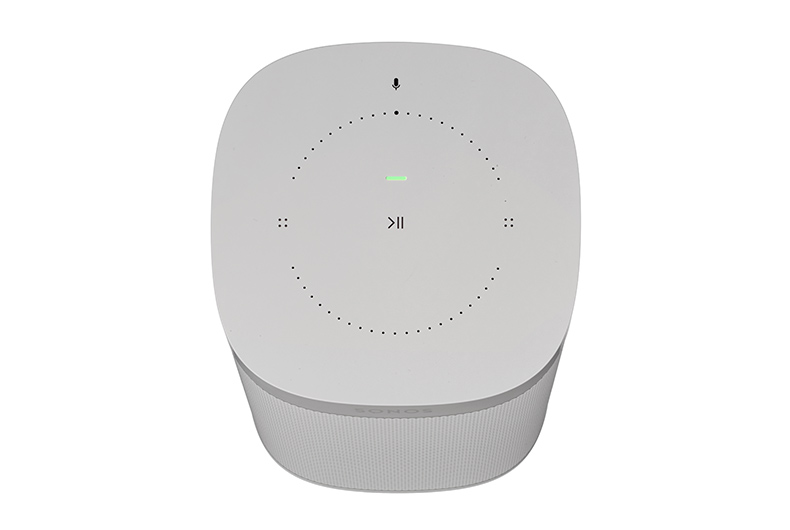
In terms of shape and size, the One's looks are practically identical to those of the late Play:1, and not far off the new Era 100 either. The only significant aesthetic departure from the legacy speaker is the replacement of its grey wraparound grille with a black or white grille, depending on the colour of speaker you’ve chosen.
Overall, the One blends into its surroundings even more effectively than its predecessor. Things have changed on the top plate, where the three buttons of the Play:1 have been replaced by a touch-sensitive panel decorated with a circle of tiny, white LEDs and symbols.
These represent play/pause, the microphone and Sonos’s now-familiar context-sensitive actions, while the white LEDs illustrate whether voice control is switched on.

Sonos is keen to point out that switching voice control off is a matter of tapping the microphone symbol, and your total privacy is represented by the lights being off altogether.
Unlike the Play:1, the One also gets a dedicated Pairing button, just above the ethernet socket.
You no longer need to have one of your Sonos units wired into your router, although we’d still recommend using cables for the most stable and reliable connection. Sonos’s wireless network is one of the best around, so you are unlikely to encounter too many issues with the wi-fi route.
Sonos clearly remains happy with the One's design, as it has more or less stuck with it for the otherwise-overhauled Era 100, which doesn't look radically different. It's just a bit more rounded, one inch taller and a tad heavier, and sporting a new control panel.
- Sonos Move 2: release date rumours, price predictions, expected design
Features

Although you can switch Alexa and the Google Assistant off entirely, it’s often worth having them listening, particularly as they're more deeply integrated here than with many rivals.
Alexa is particularly well implemented, in that you can talk to the One exactly as you would Amazon’s own Echo, so instead of having to say “Alexa, play Bowie on Sonos”, you simply say “Alexa, play Bowie”, and one of his classics will spring forth from your One. That might sound like a small detail but, in terms of regular interaction, it’s a big difference.
If you want to voice-control music in other rooms, specify where (e.g. “Alexa, play Bowie in the lounge”) and the One will send music to the Sonos kit you’ve ascribed to that ‘zone’ – even a non-Alexa-enabled Sonos speaker, such as a PlayBar or Five. “Alexa, play Bowie everywhere” sets all your Sonos speakers to synchronised Ziggy Stardust mode.

If you’re worried that having Dancing In The Street blaring from your One will prevent Alexa or the Google Assistant from hearing your request to skip Dancing In The Street, a combination of noise cancelling, something called “smart voice capture” and a custom-designed six-microphone array ensures that you can always be heard.
The Sonos One launched only supporting Amazon Music with voice control but has since added Spotify, Deezer, TuneIn, YouTube Music, Apple Music and Audible into the voice control mix, which is very welcome.
Having held out on hi-res music support for so long, Sonos finally brought hi-res capability with its Sonos S2 platform update last summer. That allowed Sonos S2 app users to play 24-bit files from a local drive, and now there's also support for 24-bit streaming via Qobuz and Amazon Music. To benefit you'll need the relevant subscription to either service, plus the Sonos S2 app (which supports 24-bit 44.1/48kHz for FLAC).
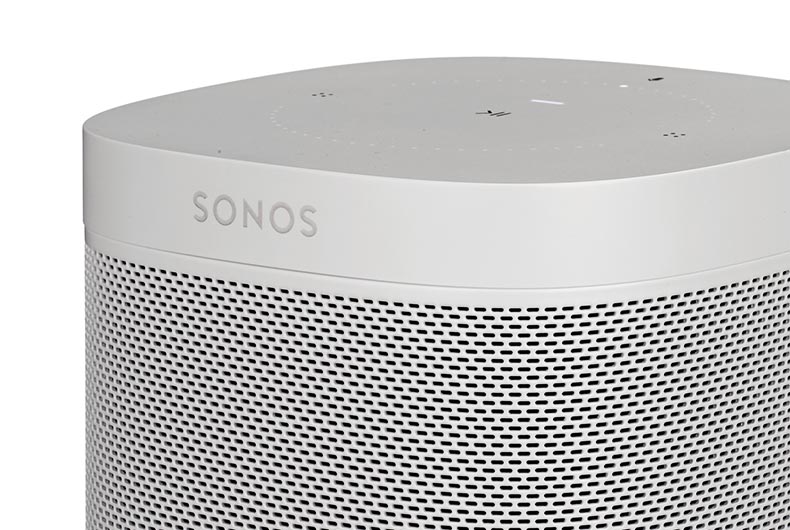
Of course, you can also use Alexa or Google Assistant on the One exactly as you do on an Amazon Echo or Google Home speaker, so as well as playing music you can set timers and alarms, check the weather, add items to your shopping list – all small features, but useful nonetheless. You may have heard about Sonos's own voice control, but at the time of writing it is only available (in English and French only) on the new Era speakers.
We’d suggest the One is particularly good as a kitchen speaker. We have loud music playing from the One in the kitchen and can still get Alexa’s attention from the adjoining room with only a slightly raised voice.
You know when your chosen voice assistant has heard you, too, as any mention of her name is met with a chime of acknowledgement, signalling that you can continue your request. That might make the experience sound disjointed, but it’s quick and natural.
With an Echo Dot you look for a visual clue that Alexa is listening. The One’s chime is quicker and more in keeping with audio communication, so it leads to more natural-feeling interactions.
The quality of the microphones makes the One less likely to mishear your requests and instructions – we find it makes fewer mistakes than our third-generation Echo Dot. Correctly hearing the request is only half the battle, though, and Alexa is still capable of misunderstanding.
The most common issue is when you say, for example, “play Ladytron”, and she instead starts playing a song with those words in the title. That can be annoying at first, but you can avoid that by saying “play some music by Ladytron” instead.
It's worth remembering that, while voice control is obviously the big headline for the One, you can of course still use it as you would any other Sonos speaker. Sonos's own app remains the best in the business for its usability and for bringing practically every streaming service (and your own stored tunes) together under one roof, and the addition of AirPlay 2 means Apple device users can send audio from almost any app they use. Spotify Connect is onboard, too, though Bluetooth connectivity and physical connections (USB-C) are the reserves of the new Era 100.
By the way, you may find references to Gen 1 and Gen 2 versions of the Sonos One. The Gen 2 – the only one available in stores now – gets an upgraded processor and more memory, but both models apparently perform and sound identical. Again, those who would prefer to save a few bucks over having voice control functionality can get the Sonos One SL instead; it's identical to the One but forgoes built-in mics and voice assistant.
Sound

When we first heard the One we suspected it was a slight sonic upgrade on the Play:1 but, having listened to both in our testing rooms, the two speakers sound pretty much identical.
That’s no bad thing, though, because the Play:1 was already near the top of the sonic charts for wireless speakers at this price point.
We’d recommend going to the effort of TruePlay tuning the One with a compatible iPhone or iPad if you have one, as it opens the sound up. Unfortunately for Google users, TruePlay via Android devices isn't supported for the One – only for the Era 100 and Era 300 speakers.
We prefer the sound with the Loudness setting left on, but experiment to discover which combination works best for you and your room. We set it up the way we like, and get a delivery that’s weighty, full-bodied and loud – not traits you’d generally expect from a wireless speaker of this size. The soundstage is spacious and impressively organised, with vocals given plenty of breathing room, making them instantly more engaging.
That’s not to say that instruments are left out – they emerge in an impressively stereo-like way from either side of the singer. It’s rather sophisticated and natural in that regard.
The One’s weight makes for deep, solid bass for a speaker this size, and there’s enough rhythm to just about keep up with Trivium’s Pull Harder On The Strings Of Your Martyr, and enough tonal shading to make the most of Flea’s finest Red Hot Chili Peppers basslines.
Treble is crisp and clear, but treads a fine line between excitement and harshness. You’ll occasionally notice the odd sharp edge or hint of sibilance, but it’s not enough to be bothersome. More often, it’s simply clear and sparkly.
As expected, the Era 100 has dialled up the quality, its stereo presentation sounding much bigger and more spacious, not to mention more detailed too. Comparatively, the One sounds compact and lacking in refinement. That said, it isn't a one-sided fight in every respect: there’s a full-bodied richness to the One's delivery of vocals that we wish Sonos had carried over to the Era 100.
- Sonos Arc vs Beam vs Playbar vs Playbase: which Sonos soundbar is best?
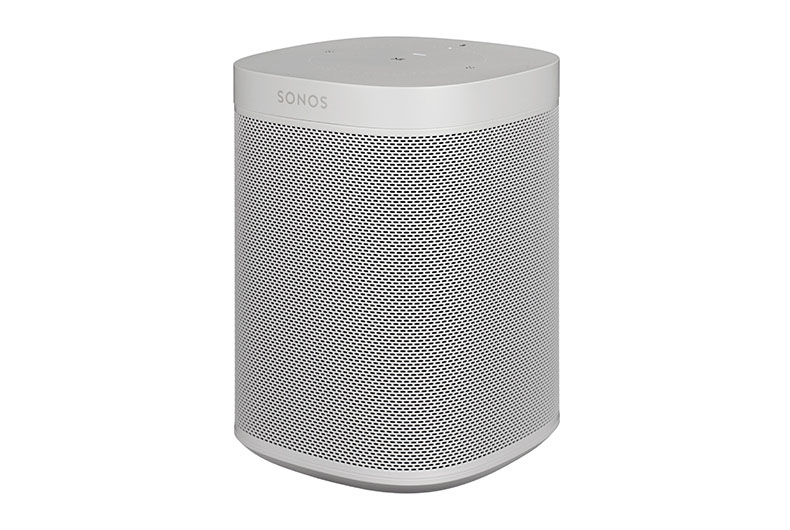
Two Sonos Ones can be combined to create a stereo pair capable of filling a room with hi-fi-like focus, and for the money that would be quite an accomplished little system. When the One launched, we thought it a shame that you couldn't form a stereo pair consisting of one One and one Play:1 – after all, buying two smart speakers for one room feels like overkill – but at least you can now pair a One and One SL in stereo.
Unsurprisingly, you can also use the One as a surround speaker for a Sonos Beam, Arc, PlayBase or PlayBar-based system, with or without a subwoofer. The Sonos Amp also allows you to create a 4.1 system, with a phantom centre channel, from a pair of wired front speakers and a pair of Ones acting as surrounds.
The One isn’t the only way to add voice Alexa to a Sonos system either – you can add an Echo or Echo Dot to your multi-room system, which brings with it the ability to send music to your Sonos speakers. That’s not as neat, though, as you need to specify which room or speaker you want to listen on. A system comprised of Sonos Ones, on the other hand, will respond based on proximity – unless you instruct otherwise.
Verdict
Despite its age and the fact that it has a successor in the Era 100, the Sonos One remains one of the best smart speakers on the market.
If you don't value the voice assistant, you may be perfectly happy with the One SL. There are also the Sonos Move and Roam portable Bluetooth/wi-fi speakers to consider, of course. And the new Era 100 is a very decent option if you have a bit more cash to splash and would benefit from its extra Bluetooth and USB-C connectivity options and bigger, more insightful sound.
But for compact convenience and quality on a budget, the clever little One still comes highly recommended as an ideal, great-value entrance into the Sonos ecosystem.
MORE:
Sonos: everything you need to know
Apple HomePod 2 vs Sonos One: is it worth paying more for Apple?
Don't want voice control? Read our Sonos One SL review
The best smart speakers on the market
What Hi-Fi?, founded in 1976, is the world's leading independent guide to buying and owning hi-fi and home entertainment products. Our comprehensive tests help you buy the very best for your money, with our advice sections giving you step-by-step information on how to get even more from your music and movies. Everything is tested by our dedicated team of in-house reviewers in our custom-built test rooms in London, Reading and Bath. Our coveted five-star rating and Awards are recognised all over the world as the ultimate seal of approval, so you can buy with absolute confidence.
